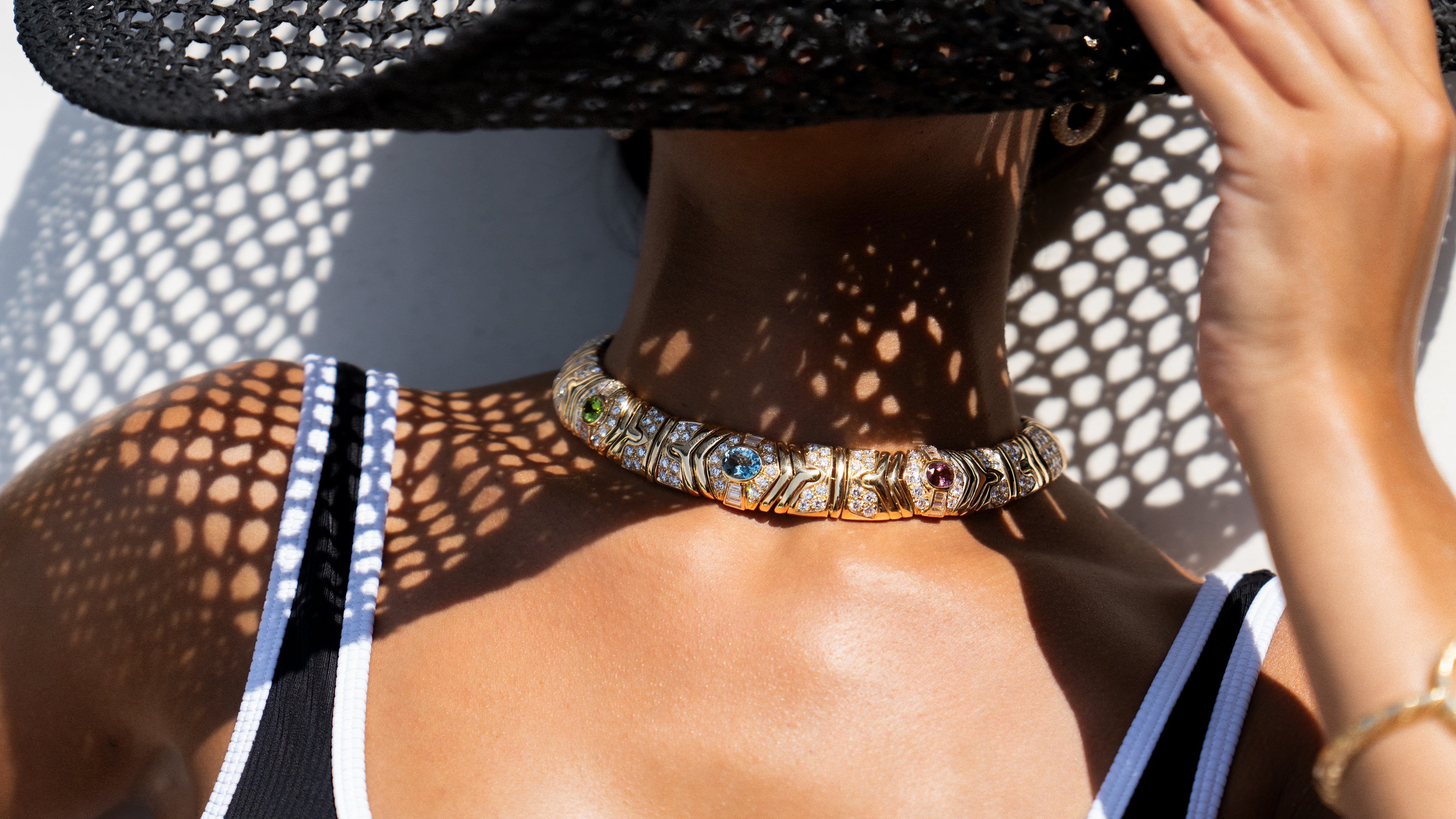Victorian Grand Period: 1861-1885
The death of Queen Victoria’s beloved Albert and the onset of America’s Civil War marked the end of the lighthearted mood of the Romantic Period.
Victorian Grand Period: 1861-1885
In spite of the prevalent themes of death and war, the Victorian Grand Period was one of exploration, prosperity, and revival.
The jewelry of the times reflected these themes as archaeologists continued to uncover ancient treasures and women were more present in the work force doing clerical and administrative tasks.
Stimulated by our primeval roots, jewelers incorporated newly uncovered motifs into their works. Ancient Greek, Roman, and Egyptian designs inspired cameos carved with culturally inspired symbols and the likenesses ancient rulers.
Discovery of the Etruscan ruins revived a metal technique that employed fine, beaded granulation.
The period was punctuated by substantial jewelry pieces that boasted of new wealth and fortune. Industry boomed as factories rose up, and millionaires were born seemingly overnight.

Materials
As well as the ever-increasing demand for diamonds, the most sought-after gemstones were garnet, amethyst, jet, onyx, pearl, opal, ruby, turquoise, and sapphire. Cabochon-cut garnets (aka “carbuncles”) were favorites in necklaces and brooches.
Other materials that were used to embellish Grand Period pieces were coral, bog oak, ivory and tortoiseshell. A glass material known as “goldstone” was also employed as a substitute for costlier gemstones.
Metal most commonly used in jewels during this period were silver, steel, and lower karat gold. Rolled gold, comprised of a thin gold layer attached to a base metal and rolled into sheets, was also used to create jewelry.

Grand Innovations
The discovery of a South African diamond source in 1867 resulted in a considerable demand for the sparkling gemstone. Over the ensuing years, South African diamond supplies surpassed that of India, which had been the world’s foremost diamond supplier for over 2,000 years.
In 1888, Cecil Rhodes founded De Beers Consolidated Mines, which quickly monopolized the burgeoning diamond mining industry in South Africa. Through a partnership with the London-based Diamond Syndicate, De Beers was able to control the world supply of diamonds to sustain lucrative diamond prices. This practice continued throughout most of the Twentieth Century.
A new deposit of silver was discovered in 1860 in Nevada making silversmiths eager to employ this new bounty into fresh jewelry designs. Typical diamond cuts of the Grand Period were the rose-cut and the old mine cut.

Grand Jewelry Trends
By the 1870s, necklaces and brooches were comprised of elaborate multi-colored enamel frames set with vibrant red garnet cabochons, diamonds, and/or bright green peridot. These pieces were known as Holbeinesque jewels, a name derived from the artist, Hans Holbein. He painted portraits during the reign of the Tudors bringing a focus to Renaissance art.
In fact, the revival of the art, fashion, and architecture of the Renaissance continued to be of great interest to the Victorians during the Grand Period.
Other popular jewelry themes included:
- Gypsy style settings, featuring gems that were flush set or graver set into metal
- Pavé-set jewelry, whereby many small stones were set close together to create a bright field of glittering gemstones
- Mourning jewelry; lockets of hair, sentimental messages, and portraits of the deceased were all employed in these memorial jewels. Prince Albert’s death fueled the production of these pieces, as citizens clamored to own a memento featuring the Prince’s likeness and to emulate Queen Victoria's dark mourning fashion.
- Hair fascinators, included tortoiseshell combs and tiaras.
- Bar pins in long, rectangular shapes.
- Mosaic-style, which took miniature gemstone and glass tiles (tesserae) and puzzled them together to create imagery highlighted in pendants and bracelets.
- Enameled bracelets, wide bangles, and bracelets with buckles.

Grand Motifs
Acorns, bells, birds, bees, crosses, crescents, hearts, daisies, stars, shield shapes and geometric forms were all common motifs during the Grand Period. Monograms were also a popular motif, notably when they appeared on lockets.
A Time to Heal
Victoria mourned Albert the rest of her life, but her subjects tired of the gloom that pervaded the royal household. By the end of the Grand Period, styles were lightening up and jewelry, as well as clothing and art overall, would soon embrace new themes and fashions, as the Late Victorian Aesthetic Period dawned.
Browse our Entire Selection of Victorian Jewelry
